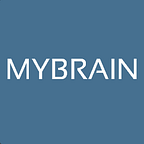Learning How to Learn, Part One
If you have ever felt stuck or frustrated when trying to learn a new subject or job skill, read on for some successful strategies for unblocking and unlocking new learning.
Many of these strategies come from UCSD’s Temporal Dynamics of Learning Center, also available as a free online course.
Balance Your Focused Attention with Relaxed, Diffuse Thinking
Focused attention is also known as top-down (conscious) learning, versus diffuse thinking (daydreaming is a type of diffuse thinking.) Alternatively, we can view this as left brain — right brain learning:
Most people can focus intently on new material for 10 minutes to 20 minutes at a time before their attention wanders. (This is normal.) The best learners know how to shift their attention away from the subject for a few minutes before diving back in.
This “break” from focused learning can be as simple as shifting your gaze to a window, or getting up and stretching your legs. A short interlude allows your brain to continue processing the new material, and briefly recharge for another burst of focused attention.
Getting into a rhythm of focused attention <-> relaxed thinking is key here. “Cramming” to learn a new subject in one long session is probably the worst way to learn.
Become a Chunking Master
Expert learners know how to “chunk well”. Chunking is a method of grouping relevant bits of information together into a cohesive grouping. Chunks can then be used to relate information to each other.
For example, assume we know a chunk of colors, and a chunk of fruits. Learning a new chunk of “red fruits” becomes straightforward since we already have the base knowledge:
Chunking is the method the brain uses to build the neural connections that represent new learning. (See neuroplasticity for a more detailed overview.)
Repetition and practice for learning the basic chunks of any new material is important here — if you don’t build a solid foundation of chunks, learning will be haphazard and more difficult.
Also, it’s important to test-repeat-test your new found knowledge as part of learning — actively testing yourself is much more effective for “sticky” learning, rather than passively re-reading instructions or a textbook.
In part two, we’ll cover how procrastination is your “frenemy”, and ways to use metaphors and analogies to speed new learning.
